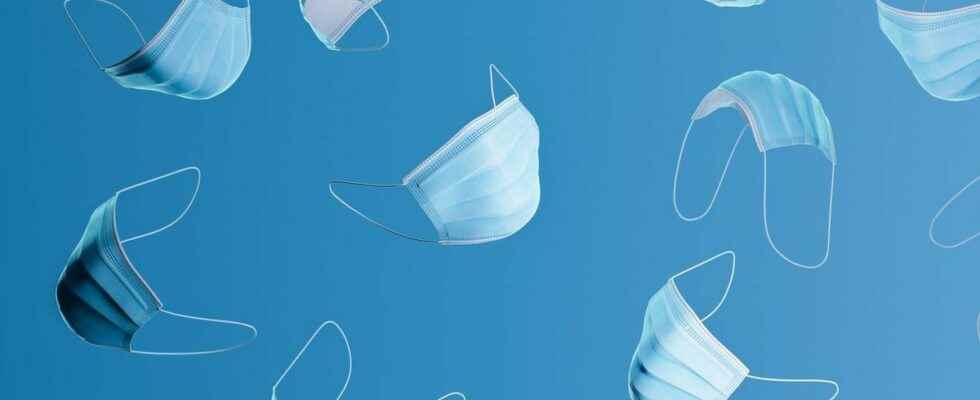Published on
Updated
Reading 2 mins.
While a British daily recently revealed that researchers have found, for the first time, microplastics in the lungs of people, many Internet users have assumed a link with the wearing of masks. A causality which is however not proven.
“Be careful, wearing a mask implants microparticles in our lungs! ”. These are the kind of messages that have been raining on social networks for several days. At the origin of this fear, particles of polypropylene, the same as those present in the composition of surgical masks for the general public, which would have been found in the lungs and in the blood of patients by researchers.
Polypropylene, present in masks… as in all our environment
The ANSES (National Health Security Agency) site confirms that the protective masks worn to protect against covid do indeed contain polypropylene. But it is a thermoplastic polymer, the most widely used in the world, in all types of industries: food packaging or household appliances to name but a few. Polypropylene is indeed one of the microplastics cited by The Guardian published last April.
On the other hand, the study evokes the environment and pollution in a general way, without targeting surgical masks at any time. In this case, it is difficult to draw scientifically established conclusions.
Masks that are more beneficial than dangerous so far
Asked about the subject, Jean-François Gérard, deputy director at the CNRS Institute of Chemistry and professor at the National Institute of Applied Sciences (INSA), wants to be rather cautious on the subject: “We know that in the atmosphere, and in the atmosphere of cities especially, there is exposure to microplastic particles that are ubiquitous around us, in all the wear and tear on surfaces.” They walk among dust, plant particles, carbon, etc. “What we can say today about the mask is that whatever the type of mask, when we wear them well, and with the required conditions (no more than 4 hours for example) it is rather them which protect us from micro plastic thanks to their filters, than the opposite”.
On the other hand, this great conclusion must take into account the difficulty of studying nanoparticles, a very topical subject and still not very detailed. “Quantify the nanoparticles that we encounter on a daily basis, which ones come from masks or from elsewhere (in greater Paris, it is said that there are around 200 various microparticles per cubic meter) or are they lodged in the body… The subject is currently much discussed and yet very difficult to analyze. We would need more relevant data to draw definitive conclusions.”
